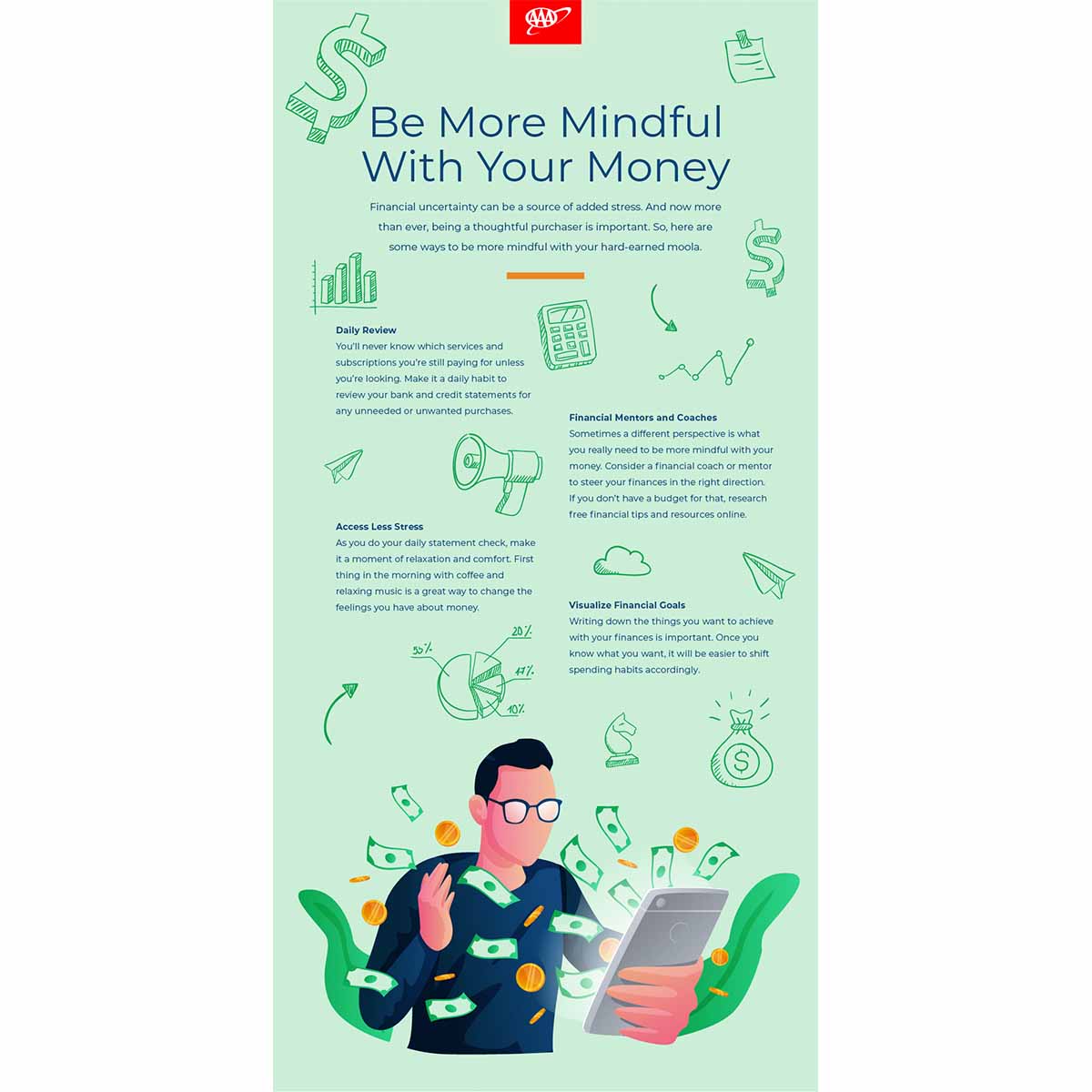Financial Tips For A More Mindful Money Life
Making better money decisions for true wealth and happiness


If we want to support a more joyful life, we must talk about money, according to Brian Portnoy, Ph.D., CFA, an internationally respected financial wellness educator, entrepreneur, and author. Given how loaded the subject of money is for many, however, this advice can seem easier said than done. “How we feel about money can trigger fear, greed, envy, joy, regret, and happiness,” Portnoy says. “It’s an emotional lightning rod.”

Portnoy helps people navigate the charged emotional thinking of personal finance by uniting mindfulness with money. He works with clients around the world on this through his financial wellness consultancy, Shaping Wealth, and distills some 30 years of financial expertise into his latest book, The Geometry of Wealth: How to Shape a Life of Money and Meaning.
Within his book, Portnoy highlights four key aspects of financial wellness:
- Getting By (the ability to handle the day-to-day expenses)
- Feeling Safe (the ability to deal with financial emergencies)
- Achieving Goals (the ability to plan for the long-term)
- Funded Contentment (connecting money with meaning)
Paying attention to this fourth component, funded contentment, is where true wealth and happiness can emerge, says Portnoy. “Focusing on funded contentment becomes a life hack because it forces you to be honest about what’s really important,” he says. “It helps you cut through the BS and underwrite a meaningful life.”
To begin charting your path toward funded contentment, Portnoy offers these tangible steps that will set you up for financial success, moving you from purpose to practice to decision-making that better aligns with your life.

FIRST, GIVE YOURSELF PERMISSION TO GET UNCOMFORTABLE
Money can be a sensitive subject that brings up a lot of emotions. Portnoy says to prepare for some discomfort and intimidation. This is natural for everyone, no matter the size of your bank account.
PREPARE TO PUT IN THE WORK
Cultivating funded contentment requires time and effort. “We’re in the weeds doing some basic gardening to get things set the way we want,” says Portnoy. In other words, don’t expect the planting, watering, and the weed pulling to happen without your dedicated involvement.
MAP OUT YOUR VALUES
Portnoy says many financial advisors get it backwards when helping clients map out a financial roadmap by beginning with fiscal examination. “We need to start with values and priorities and meaning,” he says, “and achieve some clarity around that first.”
He recommends setting aside a dedicated time to map out these values before diving into any number-crunching. Pausing to get a handle on your purpose—and authoring your life story, rather than playing a victim to it—will better equip you to put purpose into financial practice.
- Beyond day-to-day happiness, what gives you a greater sense of joy or meaning in life?
- Where do you find connection?
- What inspires you?
- What are you good at?

GATHER YOUR FINANCIAL RECORDS—EVERYTHING, BIG AND SMALL
A big blind spot for many, according to Portnoy is this: being self-aware of your true financial state. He’s even experienced this with some of his own MBA-educated clients. Without financial organization, it’s impossible to have an honest and accurate and honest knowledge of your true financial health.
Take time to organize where you are spending, from checking, savings, and investment accounts to paid subscriptions to miscellaneous annual and monthly fees and dues. Also harness any associated online passwords. Put it ALL into a simple file for easy access and reference.
CREATE AN “OWE” VS. “OWN” BALANCE SHEET
The next step is to tackle the dollars and cents. Portnoy recommends drawing a “T” on a piece of paper and creating two columns: “Own” and “Owed.” From there, take anywhere from 10 minutes to an hour to laundry list your incoming assets and outgoing expenses. “You immediately have this transparency as a superpower into your financial health,” he says.
ASSESS YOUR BUDGET
Portnoy recommends software such as Mint or YNAB (Why You Need a Budget) to help organize your cash flow into a more comprehensive, yet easy-to-understand, budget. What’s going on, and what’s coming in? Begin to examine where your money is going and why.
PLACE A PURPOSE-DRIVEN LENS ON YOUR BUDGET
Recognize where your spending does and does not align with your values, and make decisions based on this.
- In which categories are you spending the most money? How does your spending on each align with your values and purpose?
- What are the things that you want to avoid happening? What are the aggravations, distractions, and frictions that you’d pay to avoid?
- Where might you find the courage to scale back or cut completely? (e.g. Do you really need five streaming services or will two suffice?)
- What are your aspirations? What's on your bucket list, both big and small? What do those things cost?

RECOGNIZE THAT FUNDED CONTENTMENT IS ALWAYS EVOLVING
“The yellow brick road toward funded contentment is not static,” says Portnoy. It’s something that deserves monitoring and reassessing—especially as you move into new life stages and phases. Keep revisiting this process and the questions attached, with the understanding that your template for funded contentment will evolve.
Learn more about how to make better money decisions in Brian Portnoy’s book The Geometry of Wealth: How to Shape a Life of Money and Meaning.
